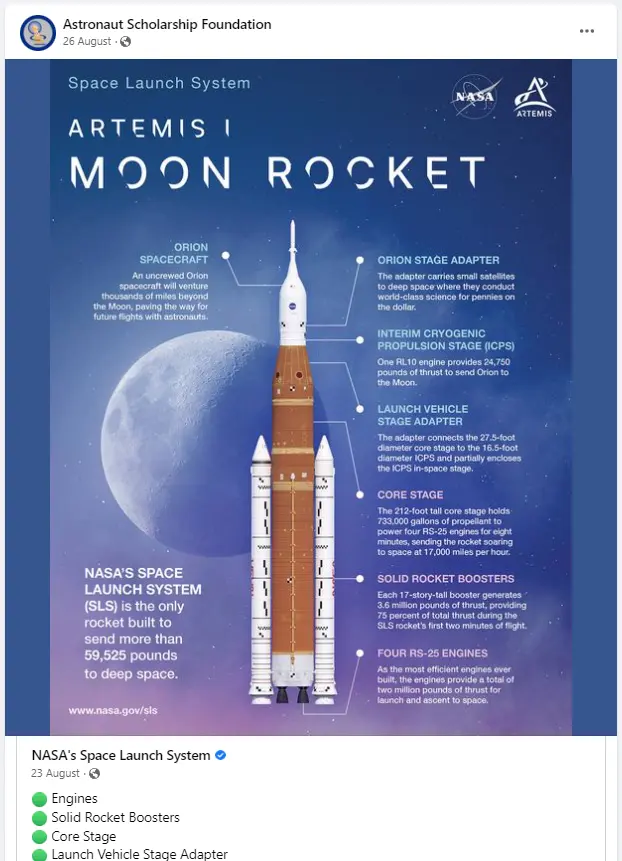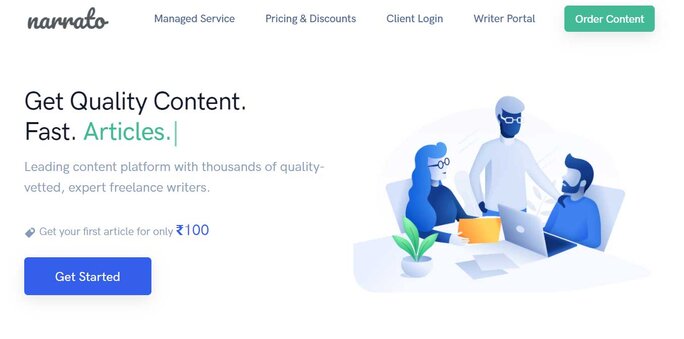The harsh truth is that a lot of people do not donate to nonprofits because they are unsure of the nonprofit’s real motives. People do not know if their money will be used for its intended purpose or how nonprofits will invest the money. In some situations, people might wonder if their donations can even make a real difference.
This shows that there are clearly trust issues among potential funders and followers of nonprofits. But, if there is no trust, then it is difficult to inspire people to volunteer and attend your events.
This is why social media marketing is a great way to build trust and regularly inform your community about what you are doing.
I know that you have a Facebook page or a Twitter account to promote your nonprofit activities, but what you really need to back these social media accounts up is a social media strategy for nonprofits such as yourself.

And, you know what?
Social media in the nonprofit world goes beyond just garnering subscribers!
It is all about following the right social media marketing strategy.
Engaging with new supporters on social media has never felt this challenging due to the enormous amount of distractions that we see on social media pages. Such distractions prevent you from keeping your cause at the top of your target’s news feeds.
To tackle this challenge, we’ll discuss ideal social media marketing practices for your nonprofit organization. Eight tips mentioned here are exclusive to nonprofits, making this the right strategic guide for nonprofits.
A well-defined mission and objective are prerequisites for an effective social media strategy for non-profits.
Let me give you an example!
Suppose one of your organization’s goals is to ensure adequate natural resources for society to meet its present and future needs. In that case, you need to post content regularly that is related to sustainability and environmental protection. Your posts should unveil efforts taken by your organization towards ensuring a safe and sustainable future.
In the example given below, check out how the N.C Forest Service has aligned its social media goals with nonprofit goals.

Simply put, your brand identity should replicate your social media posts!
Note that your entire team also needs to be on the same page for better coordination and clarity.
This is because a person handling your social media will be more confident when provided with the necessary information regularly. As a result, it will be easier to achieve the desired objectives.
Once you are clear about your audience, find out the most used and suitable social media platforms, and focus your efforts accordingly.
This is important. Do you know why?
Rather than posting on every social media platform, it is advisable to use 3-4 social platforms to market your nonprofit endeavors.
I have enumerated the benefits of four major social platforms- Facebook, LinkedIn, Twitter, and Instagram. Using these social platforms, a non-profit agency can amass more followers and an audience.
- Facebook: No agency or organization can avoid Facebook when it comes to brand promotion. Add-on features like the Facebook social impact are a powerhouse for your non-profit agendas.
- LinkedIn: This is an ideal platform to gain corporate support and credibility, reach potential volunteers, look for corporate donations, etc. Based on the tagline “World’s largest professional network, you should keep your post more professional and less casual with no antics.
- Instagram: Put your best and ambiguous images of your efforts, which can translate into positive emotions towards your non-profit. Using this gentle way, your agency can attract more audiences and bolster your not-for-profit motives.
- Twitter: Keep your message short, crisp, and stay aligned with the latest news. Strike when the iron is hot to engage with the audience in a shorter time. Photos, hashtags, and graphics will boost interest and yield fantastic outcomes for your non-profit.
Rather than spreading yourself thin across every channel, focus on a few platforms where your audience is most active. Using a tool with social media publishing capabilities ensures that your content goes out consistently on those platforms—keeping your nonprofit’s message present without overwhelming your team.
4. Understanding and Targeting Your Audience
It is advised to identify your audience based on demographic data and information about individual members of your target audience.
If you assume your social media posts are enough to engage your audience, then you might be wrong. Yes, you read it right!
Another important factor to consider is the type of content that you might want to share on social media.
Let me explain!
If you are handling a social media handle of a university, think about the trending topics in education and what your university and college can offer to students. Your university website can provide some exposure about the courses offered, but students want to see what goes around in your college.
In the example cited below, the Astronaut Scholarship Foundation is motivating aspiring students to explore NASA’s space launch system.

Furthermore, do not just inform and engage your audience; go one step ahead and solve their major problems.
Doing this will develop a reciprocal relationship and ultimately build trust and potential followers.
While creating a content strategy for your non-profit, it is also essential to realize why people follow and like specific brands. This is where you might need to work on your storytelling abilities.
Yes, storytelling is the key here.
If you want to dig deeper into crafting narratives that resonate, check out this guide on social media storytelling to make your cause impossible to ignore.
Look at how other nonprofits tell their respective stories.
After you share, do not hesitate to ask your followers about the kind of activities or posts they wish to experience or read going forward. For this, try gathering information via emails, surveys, etc., and identify their sincere wishes.
Analyze your social data and see what has worked and what has not. This will help you identify what type of content resonates most with your audience.
Now you know what your followers want!
This is when you should get creative and think beyond texts and images.
If you want writers for your team, try Narrato.in. This is a platform to hire quality freelance writers.

Your non-profit agency should post a variety of content like images, videos, GIFs, data-based visuals, etc. Focus on the emotions that your content can trigger rather than hackneyed social media promotions. Make sure that your content is mobile-friendly for your social media strategy for non-profits in order to receive effective social media engagement.
You should also use content curation tools to power your marketing strategies.
6. Leveraging Cross-Promotion for Greater Reach
Social media is an excellent platform to cultivate an emotional touch that helps supporters feel connected. Such engagement on social media will showcase your nonprofit’s transparency and accountability. Your audience will recognize how you help society, and this will gradually acquiesce to your non-profit motives.
This can be done via cross-promotion.
Let’s look at a few cross-promotion ideas:
- Better social media engagement with your audience can be done by responding to questions, adding comments, and through high-quality content.
- Also, look for hashtags to find new conversations to join.
- Consider cross-promotion like an e-conference or summit, wherein you get an opportunity to unveil your motives effectively.
- Share content from other non-profits, hold contests, tag people, and start a private social media group. You can also
engage with as many stakeholders as possible . - Besides, promote your not-for-profit motives with emails, calls, conferences, webinars, etc.
As discussed in the introduction, budget allocation issues are not uncommon for non-profit agencies, and so it becomes necessary to allocate funds.
Why not try paid social ads?
Here are the benefits of paid social ads:
- When done effectively, paid social ads can promote your content and help you reach new people with the same interests as yours.
- Filters allow you to target your ideal not-profit followers on each social network by demographic, interest, behaviors, etc.
Avoid buying followers. Period.
- It is not advisable to allocate social media ad budgets over buying followers for non-profits. If you do this, your follower count might rise, but your engagement rate might not.
- You should not spend money to promote your non-profit message to a group of people that merely care less about your organization.
Although SocialPilot provides substantial discounts to non-profits, it is still essential to allocate budgets. When leveraged strategically and thoughtfully, social media platforms are an excellent way for nonprofits to connect with stakeholders, cultivate loyal donors, and expand their reach and audience.
Tracking your success:
- If you do not measure your results, you will not be able to evaluate the performance of campaigns.
- You can track your social media efforts using SocialPilot to ensure that you are progressing towards your goals.
- We also recommend using Google Analytics, Twitter Analytics, Facebook Insights, Instagram Insights, YouTube Analytics, etc. You will be able to track the behavior of your audience, leading to better results.
As we know, influencers are well-positioned to market and wield non-profit thoughts effectively.
The thing to note here is that it is not always necessary that a highly paid or venerated influencer can only help you out.
Who can help if not social influencers?
Let’s talk about these special people who can pave the way for your nonprofit’s success!
- Citizens can make a change if they communicate effectively. Such citizen influencers include volunteers, donors, activists, customers, fans, and casual bloggers.
- If your cause is genuine and newsworthy, professionals like journalists, public relations managers, bloggers, industry leaders, etc. can bolster your non-profit mission and add legitimacy.
For example, John Haydon is one of the influencers who has helped hundreds of nonprofits realize their best marketing and fundraising results.

How can you take advantage of them and build a mutual relationship?
- Engage with old influencers, and keep an eye on new influencers through engagement.
- Follow them, like and comment on their posts, or inform them about common interests and introduce them to your cause.
- Albeit I recommend that you create high-quality content and then request them to share it on various social platforms.
A combination of social media management and social media listening will enable you to inspire people and have empathy toward non-profit goals.
Usually, nonprofits manually search for network groups and people, and they tend to spend more time on networking efforts. Nonprofits can monitor multiple networks and report data almost immediately using social listening tools.
Let’s talk about the process and benefits of social listening:
- You can identify significant trends that potential users like, leading you to target them accordingly.
- You will be able to make unambiguous decisions about content selection and means of communication.
- What is more, you can do your public relations effectively without external support and monitor what other nonprofits are doing.
- Social listening gets magical when it comes to PR because social listening tools find media outlets, journalists, and bloggers with ease. Other benefits include sentiment measurements, tracking mentions, etc.
Social listening works best when paired with a robust set of management features—analytics, publishing, collaboration, and more. That’s why having access to comprehensive social media tools can help you streamline every part of your nonprofit’s online strategy, from planning to reporting.
Final words
Plan your campaigns with intention and map out the content you want to share ahead of time. Consistency is key, and using a platform like SocialPilot can make it far easier to keep your posts on schedule without adding extra workload. With its scheduling, publishing, and analytics capabilities, you can focus more on building meaningful connections while the tool handles the logistics.
The strategies outlined here may seem straightforward, but applied consistently, they can help your nonprofit expand its reach and impact across multiple areas of social service. If you’re considering streamlining your efforts, explore SocialPilot’s pricing plans to find an option that fits your organization’s goals and resources.

